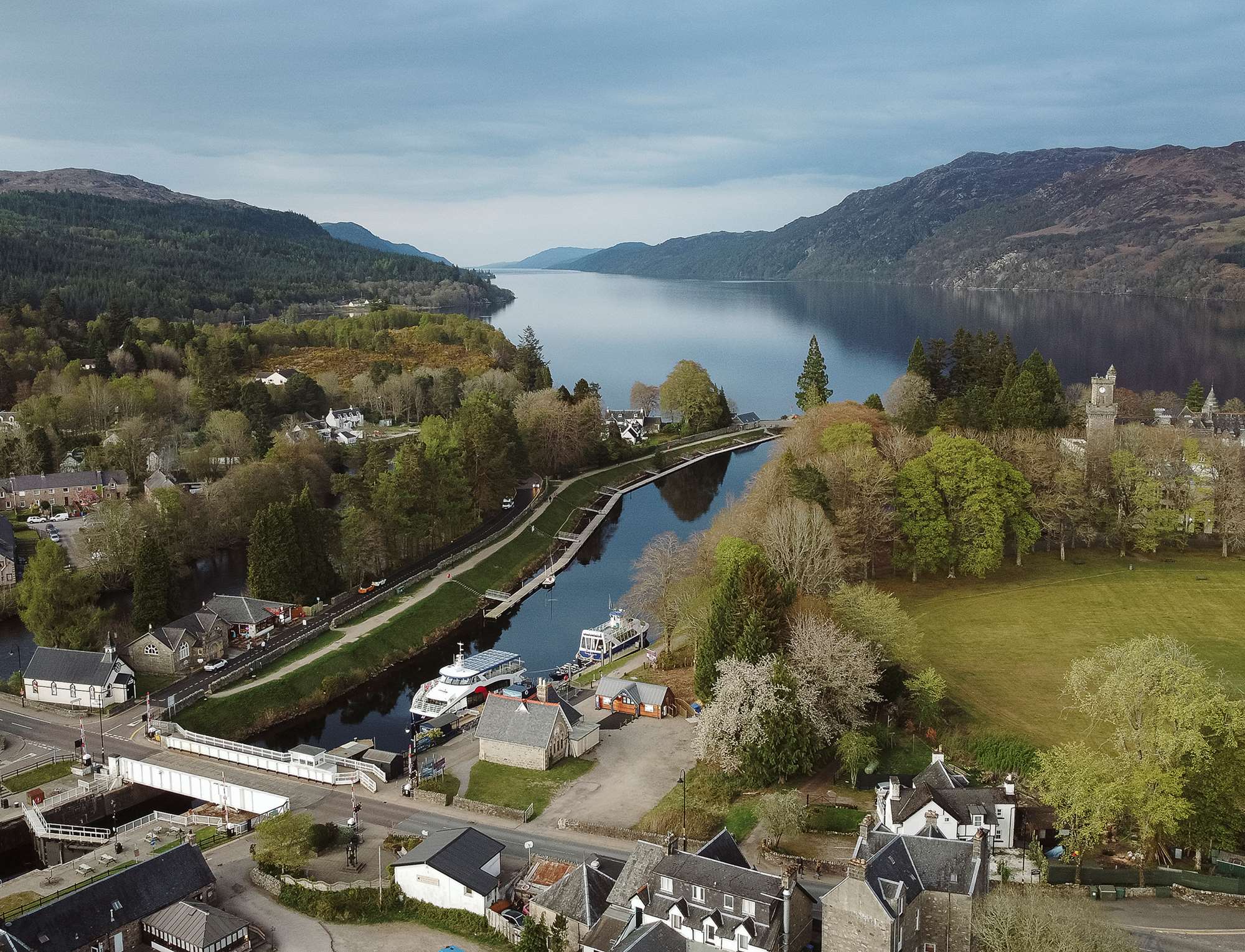
Caledonian Canal
- Home
- Historical Locations
- Caledonian Canal
1620
In 1620, a Highland prophet called the Brahan Seer predicted that full-rigged ships would one day be sailing round the back of Tomnahurich, near Inverness, at a time when the only navigable route near the location was the River Ness, on the other side of Tomnahurich.
1726
Engineers started to look at the feasibility of a canal to connect Loch Linnhe near Fort William to the Moray Firth near Inverness in the 18th century, with Captain Edward Burt rejecting the idea in 1726, as he thought the mountains would channel the wind and make navigation too precarious.
1773
The Commissioners of Forfeited Estates had originally been set up to handle the seizure and sale of land previously owned by those who had been convicted of treason following the Jacobite rising of 1715. By 1773, they had turned their attention to helping the fishing industry and commissioned the inventor and mechanical engineer James Watt to make a survey of the route.
1774
James Watt published a report in 1774, which suggested that a 10-foot (3.0 m) deep canal from Fort William to Inverness, passing through Loch Lochy, Loch Oich, Loch Ness and Loch Dochfour, would require 32 locks, and could be built. He emphasised the benefits to the fishing industry, of a shorter and safer route from the east to the west coast of Scotland, and the potential for supplying the population with cheaper corn, but again, thought that winds on the lochs might be a problem.
1793
William Fraser, when proposing his own scheme for a canal in 1793, announced that "nature had finished more than half of it already". At the time, much of the Highlands were depressed as a result of the Highland Clearances, which had deprived many of their homes and jobs. Laws had been introduced which sought to eradicate the local culture, including bans on wearing tartan, playing the bagpipes, and speaking Scottish Gaelic. Many emigrated to Canada or elsewhere or moved to the Scottish Lowlands.
1799
Crop failures in 1799 and 1800 brought distress to many and prompted a new wave of emigrants to leave.
1801
The engineer Thomas Telford was asked to investigate the problem of emigration in 1801, and in 1802 published his report, which suggested that the main cause was landowners who had previously kept cattle creating vast sheep-farms. Realising that direct government action to confront the issue would be seen as interference, he therefore suggested that a programme of public works, involving roads, bridges, and canals, would be a way to provide jobs for people who had been displaced by the sheep farming, and to stimulate industry, fishery, and agriculture.
Telford consulted widely with shipowners, who favoured a canal instead of the hazardous journey around the north of Scotland via Cape Wrath and the Pentland Firth. He obtained advice from Captain Gwynn of the Royal Navy, who stated that Loch Ness and Loch Lochy were sufficiently deep for any size of boat, and had safe anchorages if winds proved to be a problem, but that Loch Oich would need to be made deeper, as it was shallow in places. He established that Loch Garry, to the west of Invergarry, and Loch Quoich, beyond that, would provide an adequate water supply. He estimated that a canal suitable for ships with a draught of 20 feet (6.1 m) could be built in seven years and would cost around £350,000.
An additional benefit would be the protection that the canal offered to shipping from attacks by French privateers. Telford also looked at the possibility of a canal to link Loch Eil to Loch Shiel, both to the west of Fort William, but ruled out the scheme because of the depth of cuttings that would have been required. The canal, as well as a number of projects to build roads, harbours and bridges, was the first time that public works of this sort had been funded by the government. Telford had convinced them that it was feasible, and that employing local people on it would help to stop the tide of emigration, but no one considered whether it would pay its way when it was completed.
1803
On 27 July 1803, an act of Parliament, the Caledonian Canal Act 1803 was passed to authorise the project and carried the title: An Act for granting to his Majesty the Sum of £20,000, towards defraying the Expense of making an Inland Navigation from the western to the eastern Sea, by Inverness and Fort William; and for taking the necessary steps towards executing the same. The act appointed commissioners, to oversee the project, and some funding to enable the work to start.
1804
Less than a year later, on 29 June 1804, the commissioners obtained a second act of Parliament, the Caledonian Canal Act 1804 which granted them £50,000 per year of government money, payable in two instalments, to fund the ongoing work.




